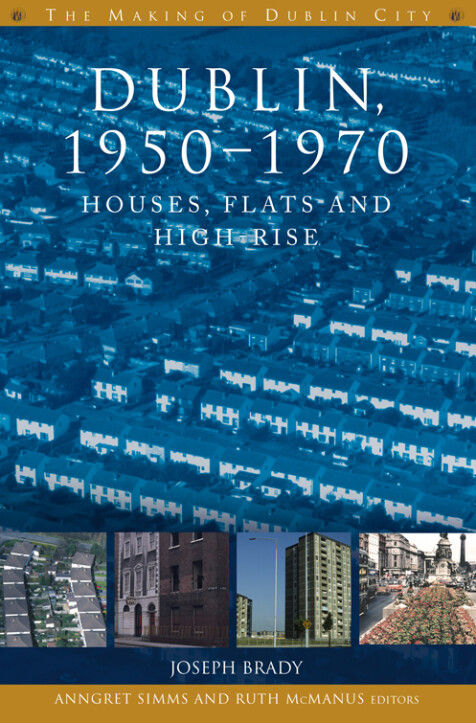Dublin, 1950–1970
Houses, flats and high rise
Joseph Brady
‘An exceptionally well researched and wonderfully presented work that is essential reading for all local or social historians with an interest in Dublin and its environs. This in-depth study includes much of the areas now covered, since 1994, by the four “Dublin Local Authorities” – Fingal, South Dublin, Dublin City and Dún Laoghaire Rathdown … This volume is of exceptional importance as it chronicles a period of Dublin’s history that, for many readers, is within their own lifetimes of that of their parents. This book is not only a history of modern Dublin, it is the story of the ordinary Dubliners and their communities. It is extremely well illustrated, with copious notes and with details on individual housing estates, roads and their dates of construction, [and] it is bound to have a very personal appeal for many’, Michael Merrigan, Ireland's Genealogical Gazette (2016).
‘Dublin … is a mid-twentieth-century city. It was in these decades that the sprawling suburbs where most of our lives take place were built. These places – Ballyfermot, Finglas, Inchicore, with their distinctive concrete streets, magnolia streetnames, pebbledash terraced houses, and box hedges – are in so many ways beautiful urban landscapes … The story of these estates is the focus of Joseph Brady’s new study Dublin 1950–1970. The book is by far the most comprehensive exploration to date of housing policy in Dublin during the mid-twentieth century … it provides an impressive level of detail regarding housing policy during the suburban developments of the 1950s … At the heart of this narrative is a story about place and call in Irish culture … Brady must be commended for the enormous amount of new material in the book … These places are the places we all grew up, and its time we got to know them better. This book is an excellent place to start', Erika Hanna, Dublin Review of Books (September 2017).
‘’The confidence of the author is very evident in every chapter, whether it is the minutiae found in the Dublin Corporation minute books or a more discursive view of Europe during this period; the reader is meticulously carried on an in-depth journey … a welcome contribution [that will] hopefully inspire the scholar in folk life and ethnology studies to bring the scholarship forward’, Kelly Fitzgerald, Folk Life (October 2017).
‘Joseph Brady’s book provides us with a clear analysis of the cyclical nature of housing demand, and an examination of the common factors that indicate both the supply and demand. His examination of the prolific 1950–70 era in housing illustrates both the achievements and the failings, and identifies the key factors that led to problems for both residents and the Dublin local authorities', Irish Economic and Social History (2017).
'This is the sixth volume in The making of Dublin City series. When Dublin housing is discussed the tenements have largely dominated the discourse among historians and geographers. In this pioneering series the story is taken much beyond that ... In this volume the focus is again on housing and covers innovative developments in the 1950s and the huge surge of the 1960s. All this ... is told in detail ... in an easily readable style ... Many readers will find that they know quite well many of the places discussed and may have lived in some. The text is enlivened by many diagrams and relevant tables ... the inclusion of many breathless advertisements of the period and cartoons from the still much lamented Dublin Opinion help to capture the atmosphere of the time as no text can. The topic of housing could be a dry read. This is far from the case here. Joseph Brady presents us with the fruits of extensive research in a lively and comprehensible text that is informative and a pleasure to read.'

